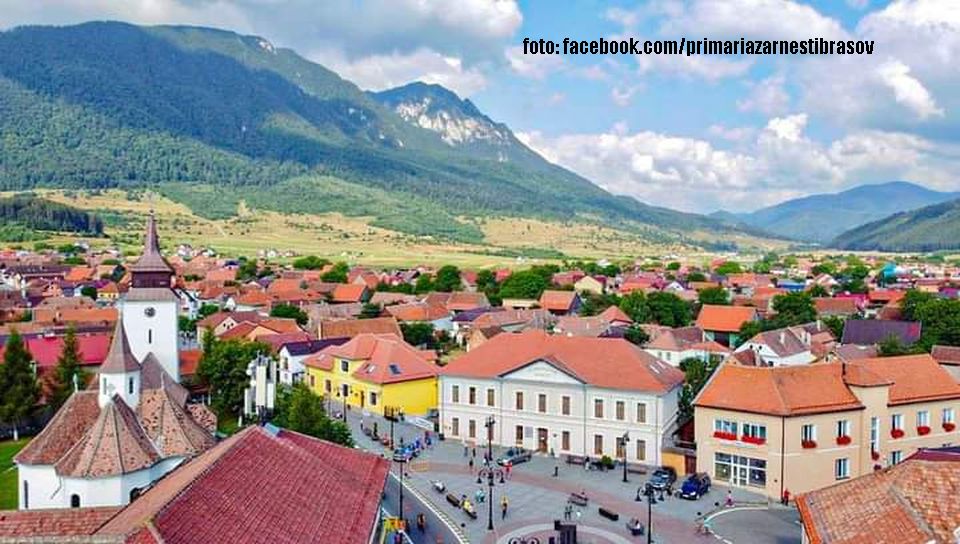Mountain Vacation in Zarnesti
Most tourists come to Zărnești for wildlife and to observe forest animals. They are attracted by the abundance of large carnivores in the area.

Daniel Onea, 27.06.2024, 13:23
There are a few specialized agencies that organize guided tours for animal watching. But here you will also find a museum of the Piatra Craiului National Park, a church built more than five centuries ago, an adventure park and a 70-hectare bear reserve, unique in Romania.
Andreea Maria Nuță is a mountain guide. Six years ago she moved to Zărnești, where she founded a company through which she promotes the area and guides all tourists to the most interesting places. Zărneşti is a small town, says our guest, a settlement that was industrial, because in the past several factories operated there. Nowadays, it is known especially for its surprising nature, and for the special holidays that can be organized here.
“As a setting and as a feeling it compares to the great resorts in the Alps, like Chamonix, but also to the resorts in the Tatra Mountains, like Zakopane in Poland, so somehow it’s exactly the starting point to perhaps the most beautiful routes from Romania. It is located close to the bend of the Carpathians, at the end of the famous Rucăr-Bran corridor, which makes the transition from southern Romania to Transylvania to northwestern Romania, surrounded by mountains. Its location is right next to Bran Castle, a little off the main road, for a little more peace, at the foot of the Piatra Craiului Mountains and beyond. So, as a geographical settlement, I think it is perhaps the most beautifully positioned small town in Romania.”
From Zărnești, you can go on dozens of routes to the most important, beautiful and high mountain massifs in Romania. Moreover, the settlement has many characteristics from the Saxon architecture representative of southern Transylvania from the 13th century, continues Andreea Maria Nuță, mountain guide.
“The houses and all the architecture of the place bring to mind the Saxon houses, different from those usually found in Romania. The closest routes are those in Piatra Craiului. Piatra Craiului is a national park. I like to say that it is the little gem of the Romanian Carpathians, because it is not a very large mountain, but it is made of limestone. In addition to many formations, gorges, caves, grottoes and arches and all kinds of rock formations that make you fall in love with Piatra Craiului, we can also enjoy a special light depending on the time of day. For example, at sunset the limestone walls turn pink, at sunrise they are bright white. It is particularly beautiful. So, any transfer from Piața Craiului, depending on the level of training, I recommend opening it up for a tourist with average training.”
All the routes that lead to the cabins in Piatra Craiului are hiking trails, very beautiful, through beech, spruce, or birch forests. Moreover, whoever arrives in Piatra Craiului must eat the famous apple pie with fortune cookie notes. The fortune cookie notes are, as a rule, quotes about the mountain, very beautiful. And, above the cabins, the route is more difficult. Connoisseurs call it “scrambling”.
“It’s a combination of hiking and a sort of rock climbing. There are passages set up with safety chains in rough areas. There are exposed areas, where we need to help each other with our hands to move forward. The most spectacular route in Piatra Craiului is obviously the ridge route. In its entirety, it is 23 km, but crossing the ridge requires a good physical condition, it involves exposed areas, where tourists should be physically well prepared for the prospect. There are very narrow areas to walk on, so the best recommendation for a tourist who has never been to Piatra Craiului, but would also like to see what happens above the forest, would be Piatra Mică. Piatra Mică is an individualized peak in Piatra Craiului. It is a preview with absolutely all the elements that these mountains have to offer, meaning it has dense forests. It also passes by the Curmătura cabin, ascends to the ridge of Piatra Mica a Craiului, which has areas with safety chains. The peak of Piatra Mică, which is just under 1,900 m, offers a dreamy, 360-degree panorama of the entire surrounding area.”
Zărnești is in Bârsa Country, a name given by the rivers that cross the entire area, says our mountain guide, Andreea Maria Nuță. Bârsa Country is surrounded by Piatra Craiului, by the Făgăraş Massif, the highest mountains in Romania, by the Bucegi Mountains, the cradle of Romanian mountaineering, and by the Bend Carpathians, all these mountains being different from each other. Thus, Zărnești can be the perfect destination for any mountain route. Including a wildlife watching tour.
“This must be done with a specialized guide who knows how to look for, follow, and interpret the tracks that animals leave not only on the path, but also on the trees, and in everything that happens in the forest. But, for everyone, the best recommendation is the bear sanctuary from Zărnești, Liberty. It is a particularly optimistic place. Indeed, bears that can no longer be returned to the wild for various reasons end up there, but they are not kept in cages or treated like in a zoo. It is a particularly vast place, the bears have very large pens. Although the sanctuary currently houses 127 bears, there is a possibility that those who enter will only see a few bears, because the place is vast, and the bears there live as they would in their natural environment. Tours with tourists are only two a day, in Romanian and in English, to limit the access and interaction of the bears with people.”
But what impression do tourists leave with?
“I interacted with foreign tourists, a lot of them. Obviously, what impresses them the most here in Romania, especially for those who come from Western Europe, is the wild life. We still have absolutely all the animals that need to live in this type of climate and vegetation. We have bears, wolves, foxes, lynxes, wild cats, beavers, all the animals. Then we still have virgin and secular forests and a wide variety of flora. Our greatest wealth still are the natural resources, the flora and fauna we still have here. Tourists leave impressed, not knowing that Romania is such a beautiful country, with so many things to offer. Some come back for more tours.”
There’s no particular season you should think about if we’ve convinced you to visit the area. You can arrive at any time of the year. You will find guesthouses of two, but also of 4 stars. The price for six nights’ accommodation without meals included, in July, for example, varies from 300 euros for two stars, to 1000 euros for four stars.






























